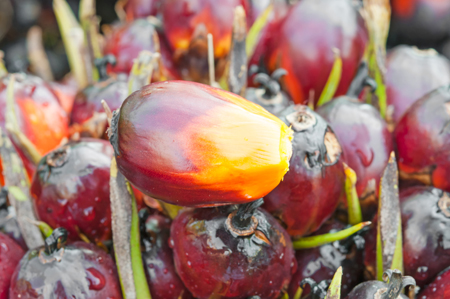Palm Oil Seen Extending Climb on Ringgit Weakness, Mistry Says
Category: Oilseeds
 (Bloomberg) – Palm oil may extend its bull market climb should the Malaysian currency retreat further against the dollar, according to Dorab Mistry, director at Godrej Industries Ltd.
(Bloomberg) – Palm oil may extend its bull market climb should the Malaysian currency retreat further against the dollar, according to Dorab Mistry, director at Godrej Industries Ltd.
Palm oil touched 2,460 ringgit ($555) a metric ton on Tuesday, the highest since June 2014, as the ringgit dropped against the greenback, making the world’s most-used edible oil cheaper for international buyers. The commodity bounced into a bull market last week amid concerns over the impact of haze on the world’s biggest producing region and a strengthening El Nino.
Benchmark crude palm oil futures will probably trade at the upper end of a 2,100-2,400 ringgit range if the Malaysian currency falls to 4.50 per dollar, Mistry told the Globoil conference in Mumbai on Wednesday. Prices could then touch 2,500 ringgit a ton, he said. The ringgit is currently trading at about 4.44 to the dollar after dropping to 4.4812 on Tuesday, the lowest since 1998.
“It is possible to go to 2,500 ringgit just for a short time,” according to Mistry, who has traded cooking oils for more than three decades. His price forecast assumes Brent crude will trade between $45 and $60 a barrel. Still, “such a level is not sustainable unless mineral oil prices rise significantly,” he said.
Output Decline
Production may decline in the first and second quarters of 2016 as the moisture deficit from El Nino and a low yielding period from January starts to affect crops, Mistry said. His estimate of global palm output to rise by 2.5 million tons between October and September 2016 takes into account damage that may be caused by El Nino.
The plunge in the ringgit, Asia’s worst-performing currency this year, combined with growing concerns over El Nino’s impact on production in Malaysia and Indonesia, helped pull palm oil out of the bear market it entered just last month, when the tropical oil hit a 6-1/2 year low of 1,863 ringgit.
Vegetable oil prices may struggle to rally if crude oil prices stay weak, Mistry said. Cheap crude makes edible oils, including palm oil, a less attractive option for biofuel feedstock. Palm oil was trading at a premium of $80 a ton to gas oil on Wednesday versus an average of $32 over the past year, Bloomberg data show.
Range Bound
“If crude oil prices stay in the range of $35 to $50 per barrel, then the loss of biodiesel demand will be very difficult to make up and will cast a long shadow over vegetable oil prices,” Mistry said. He reduced his estimates for biodiesel demand to a best-case position of a gain of 1 million tons, from 1.5 million tons forecast last month.
It’s too early to gauge how successful Indonesia will be collecting palm oil export levies to fund its biodiesel program, Mistry said.
“Indonesia does not have a good reliable track record of implementing new policy initiatives,” he said, adding that the 15 percent mandatory blending rate appears to be “too high and against the advice of every motor manufacturer.”
Global edible oil supply is forecast to rise by 4.6 million tons in 2015-16, while demand may increase by 4.5 million tons – a balance which Mistry warns could change very quickly if there’s a “production problem in some part of the world or Indonesia suddenly performs to expectation on biodiesel.”
Imports by India, the world’s biggest edible oil buyer, will rise to 15.1 million tons in the October to September 2016 marketing year from 14.1 million tons this year, with shipments of palm seen rising to 9.6 million tons from 8.7 million tons, and soybean oil to 3.6 million tons from 3 million tons.
‘Must-Own’ Soyoil
El Nino, which bakes parts of Southeast Asia but brings rain to South America where soy is grown, may pave the way for more plantings and bumper crops between March to May next year, Mistry said. Bigger supplies of soybeans for crushing into soy oil may lower prices of the rival edible oil.
“I regard soya oil as the most competitive and ‘must own’ oil today,” Mistry said, adding that India’s appetite for soy oil will grow stronger. “Soya oil will this year win market share from all other oils.” He sees soybean prices remaining below $9 a bushel, and Chicago Board of Trade soy oil futures range bound between 26-28 cents a pound. Prices may climb to 32 cents if the U.S. Environmental Protection Agency raises biodiesel mandates, he said.




